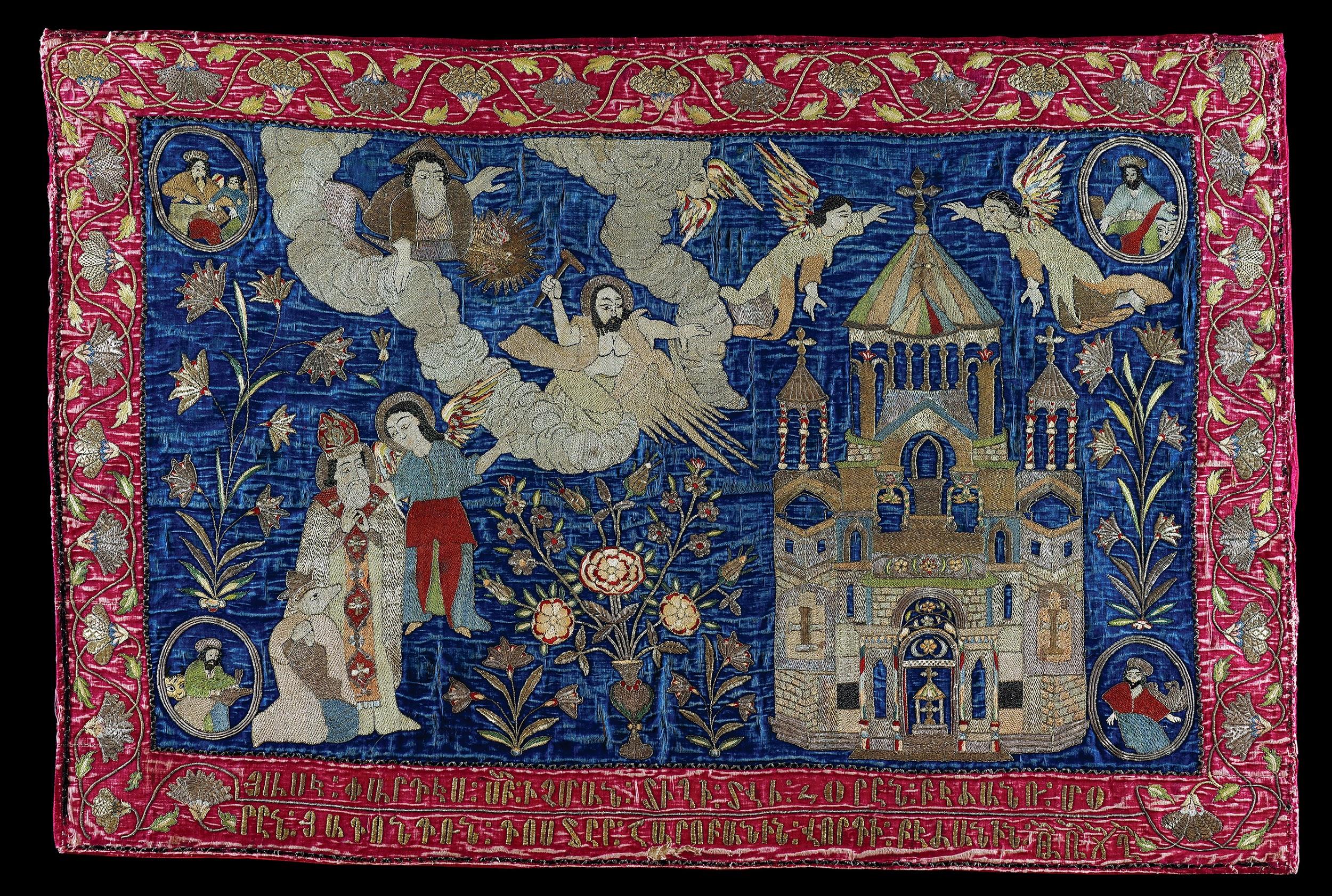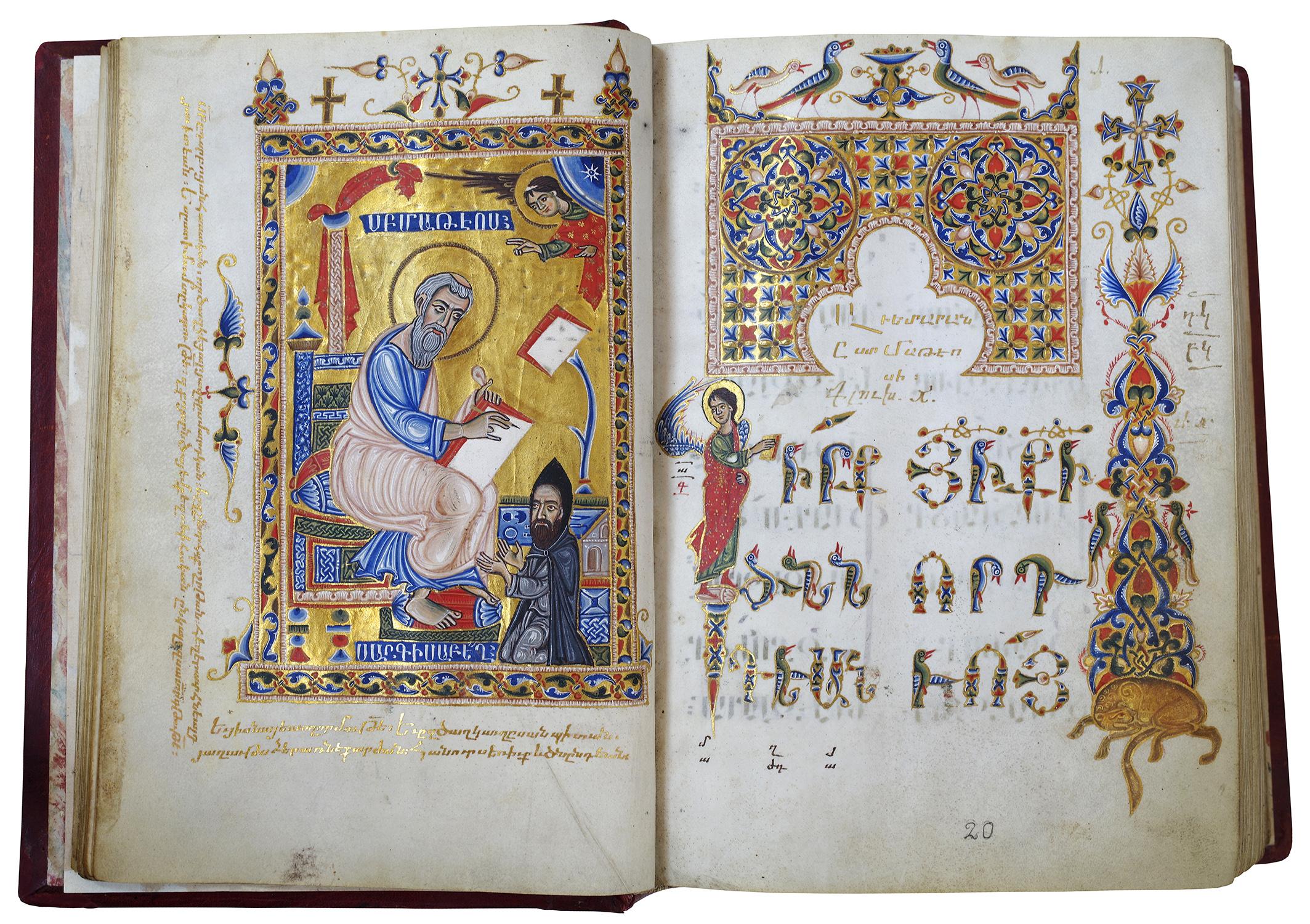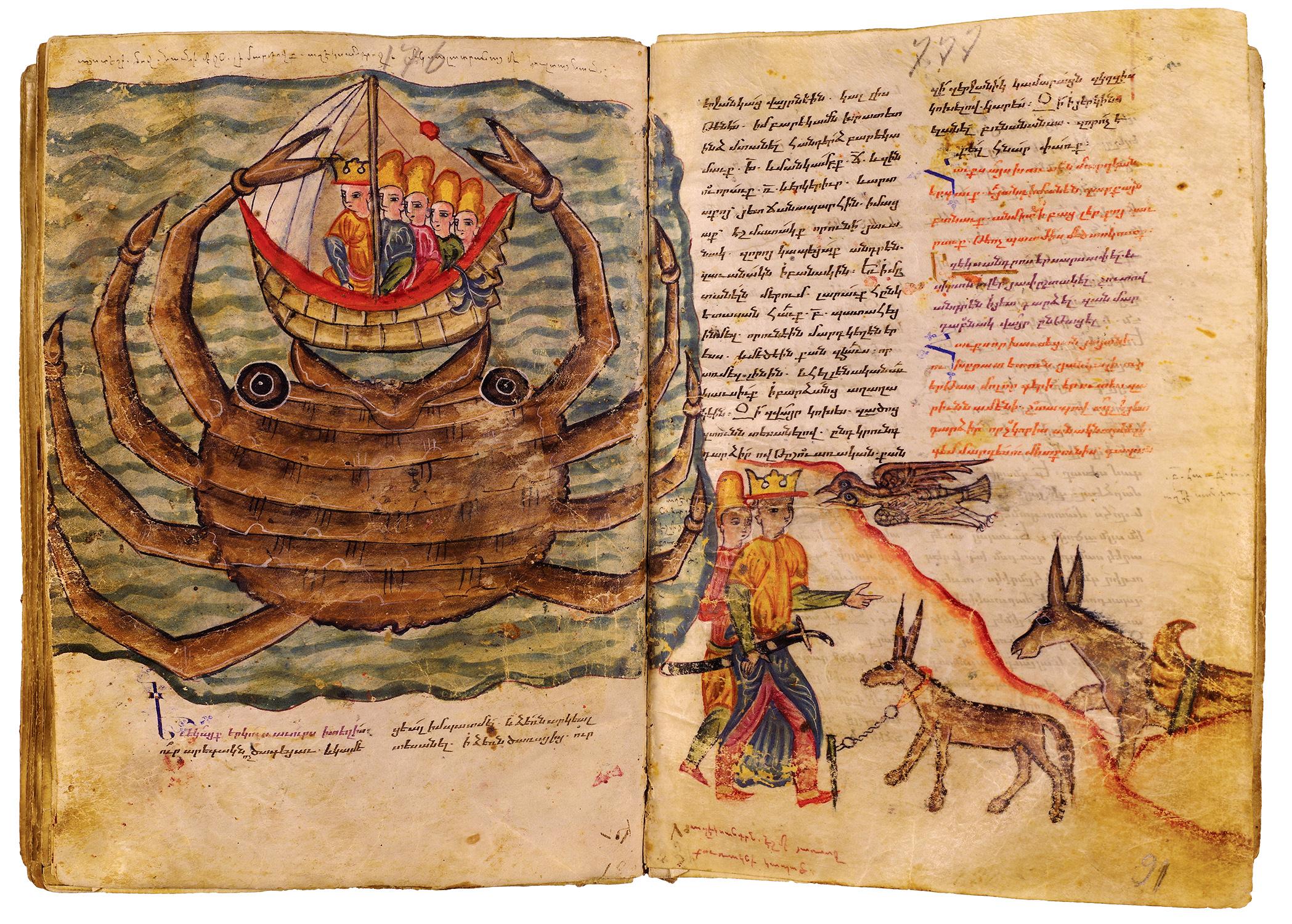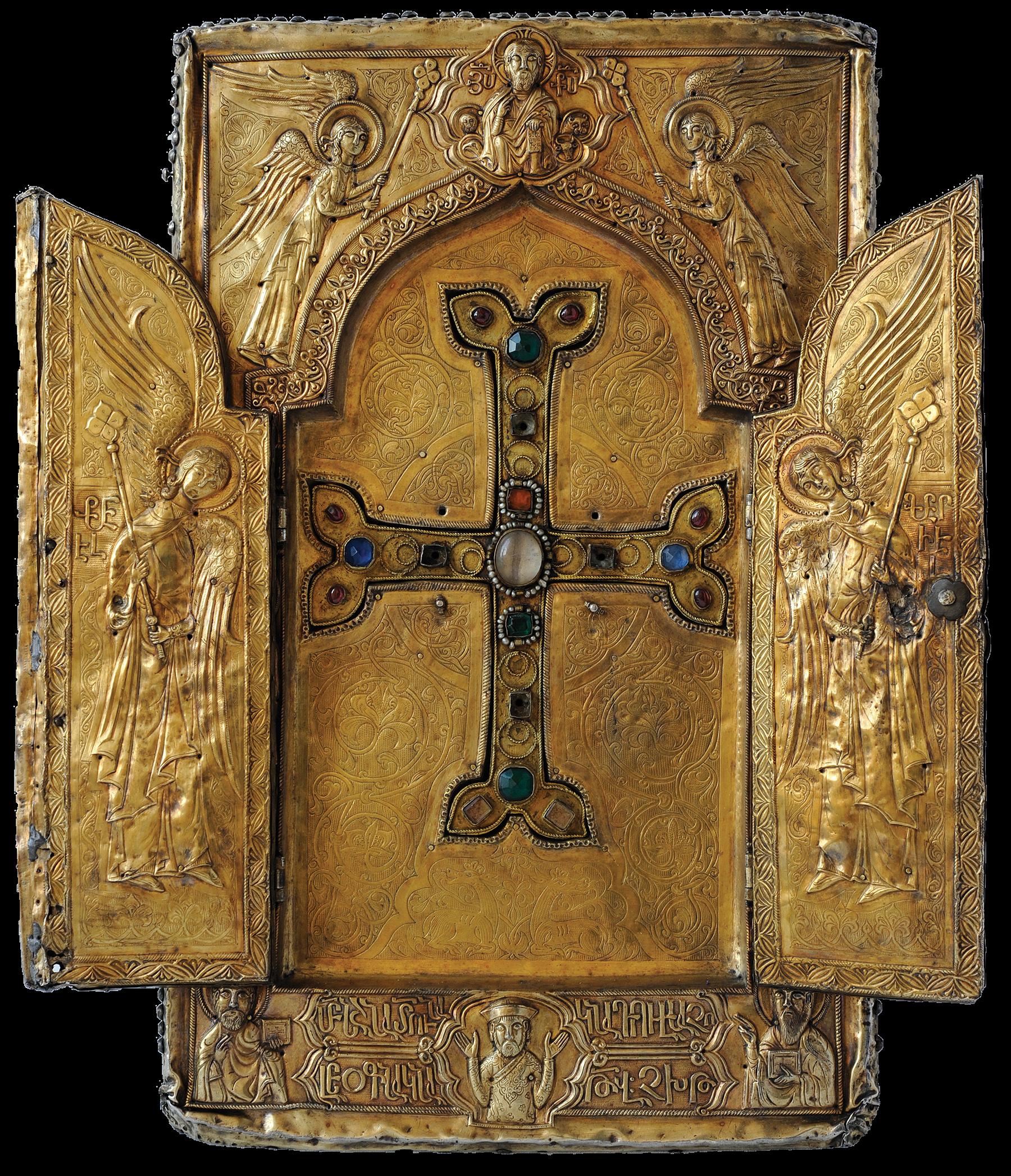An Analysis of Armenian Art Presentation by Dr Hellen C Evan

"Armenian art is non something isolated. It is woven into a global network, and needs to be understood for what makes it specifically Armenian," Dr. Helen Evans said to an enthusiastic crowd of shut to 100 on the evening of June 7, at the Armenian Diocesan Krikor and Clara Zohrab Information Heart. "It is also function of the earth's art of global significance," Dr. Evans, the distinguished Mary and Michael Jaharis Curator for Byzantine Art at the Metropolitan Museum of Art and acclaimed scholar of Armenian art, added.
The "Armenia" exhibition, organized by Evans, will open on Sept. 22, on the occasion of the 27th anniversary of Armenia's re-independence, and run through Jan. 13, 2019, at the world famous Metropolitan Museum of Art in New York.
The Very Rev. Fr. Daniel Findikyan, the newly elected Primate of the Armenian Diocese (Eastern) and longtime Director of the Zohrab Information Eye, introduced Evans, and pointed out that the scholar had previously co-curated the Morgan Library and Museum's 1994 exhibition, "Treasures in Heaven: Armenian Illuminated Manuscripts." As the Nikit and Eleanora Ordjanian Visiting Professor of Armenian Studies, he said, Evans has taught art courses at Columbia University, and has published numerous manufactures on Armenian subjects.
Evans has been especially instrumental in displaying major works of Armenian art at the Metropolitan, including treasures on permanent view in the medieval galleries. She was too responsible for bringing to the Metropolitan the huge, 1,000 pound 12th century khatchkar (cantankerous-rock) from the Lori province for which she traveled to Armenia with Metropolitan Museum Conservator Jack Soultanian, on one of her many trips there. It remains on renewed loan at the Metropolitan.
Identifier of a Significant People
Using color slides to accompany her remarks, she said that this must-run into exhibition at the Metropolitan is "an opportunity to prove Armenian art as an identifier of a significant people, and an important element of the world's art." 
Included in this exhibition—the first of this monumental scale at the Metropolitan Museum of Art—are 140 opulent gilt reliquaries, richly illuminated manuscripts, rare textiles, liturgical furnishings fabricated of precious materials, khatchkars, church models, and printed books. These all present present Armenia's distinctive imagery in the homeland and other major Armenian locations—from the Kingdom of Cilicia on the Mediterranean to New Julfa in Safavid Persia.
"The way we are presenting art is showing how Armenians with their conversion to Christianity, created a visual identity that is incredibly compelling and goes through a diversity of styles in the millennium we are covering. At the aforementioned fourth dimension, it always has the chemical element that ties Armenians together," Evans remarked.
The time period includes opening with the conversion of Armenia to Christianity—the beginning of the fourth century, and will conclude with the terminate of the Middle Ages, when Armenian books become readily available in the Middle East. "We wanted a narrative," she said. 
The evidence will focus on 4 artists, displaying several works past each of them "so people will think of them as nosotros think of Michelangelo in Italy." They include T'oros Roslin, Sargis Pidzak, Toros Taronatsi, and Hakob of Julfa, who worked in the Armenian homeland, the Kingdom of Cilicia, and New Julfa.
Pregnant Relationship of Trade Routes
The locations show Armenians equally they moved around the globe on the trade routes, which happened before the Christian era and afterward the time frame, which will be on display, she revealed. It starts in Greater Armenia (the conversion site), which is the Republic of Armenia today, and out to the West (Kingdom of Cilicia), then to Crimea and Italy, and back to Greater Armenia in the Center Ages where Armenians were devastated in many ways by different invaders. 
"Armenians controlled vast amounts of Mongol trade routes which are seen in the reliquaries donated by people with vast wealth," Dr. Evans related. "There were Armenian merchants all over Europe. They controlled the internal and external textile merchandise of India. Most spectacular are the sculpture reliquaries, and manuscripts, protected in New Julfa in the 17thursday century, with their elaborate bindings."
Armenians were not converted to Christianity from the religions of the classical earth. "What made Armenians answer to Christianity when it was not nonetheless a done bargain?" she asked. " For them, Christ is Christ, the Virgin is the Virgin. In the early on church, churchly lines were incredibly important. Armenians had their ain direct connexion to an apostle. It was a circuitous weaving together."
The other early church building to convert was Ethiopia, she stated. "Armenia controlled the trade routes coming out of China and Primal Asia which came through Armenia to reach Constantinople and the West. Both nations converted very early on, before the Roman Empire became officially Christian."
"I want at the cease of the show for non-Armenians to be very impressed by Armenian art, and for Armenians to be proud of the show," Dr. Evan declared with her usual enthusiasm and passion. "This has been an thought in progress for me ever since I did my PhD dissertation on the manuscripts of Cilicia at New York Academy's Constitute of Fine Arts," she revealed with an ear-to-ear smile.
Following a brief question and respond period, an animated give-and-take with Evans and the attendees continued at the reception.
More half of the works in the "Armenia" exhibition to exist displayed are on loan from Armenia, including Etchmiadzin, the Matenadaran Institute, and the National History Museum. Treasures have been sent from the See of Cilicia, the Armenian Patriarchate of Jerusalem, and the Armenian Mekhitarist Congregation in Venice. Selected works from the Calouste Gulbenkian Museum in Portugal, as well as the Armenian Diocese (Eastern), the Armenian Museum in Boston, and the Alex and Marie Manoogian Museum in Southfield, Mich. accept also been lent.
The exhibition has been made possible past The Hagop Kevorkian Fund, with additional support provided by the Armenian General Benevolent Union (AGBU), the Giorgi Family Foundation, the Karagheusian Foundation, the Nazar and Artemis Nazarian Family, the Ruddock Foundation for the Arts, the Strauch Kulhanjian Family and the Paros Foundation, Aso O. Tavitian, and the National Endowment for the Arts.
Educational programs accompanying the exhibition will include an international symposium, lectures, concerts, a website, a blog, and grouping tours of the exhibition. A richly illustrated itemize will be published by the Metropolitan Museum of Art and distributed by Yale University Press.
Source: https://armenianweekly.com/2018/06/21/dr-helen-evans-presents-metropolitan-museums-armenia-exhibition-in-new-york/
0 Response to "An Analysis of Armenian Art Presentation by Dr Hellen C Evan"
Post a Comment